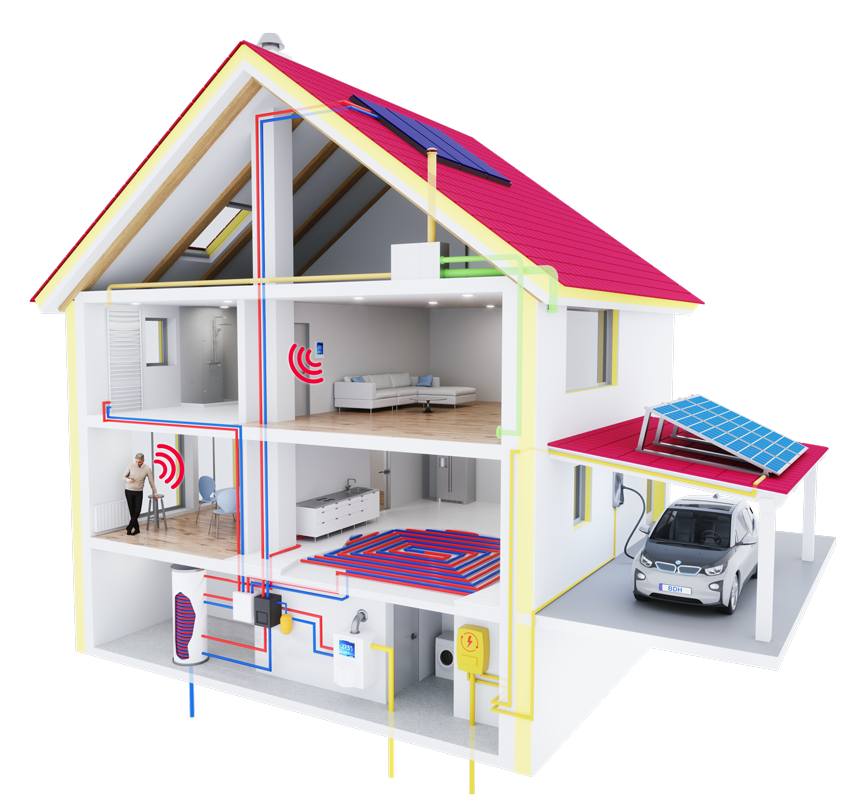Modern gas condensing devices are very efficient and can significantly contribute in reducing your domestic energy consumption. They ensure that your house is heated and provide domestic hot water at all times. In addition, they can be excellently combined with renewable energy sources, especially solar thermal energy. Modern condensing boilers function quietly and are completely free of odour. They can be installed practically anywhere in the house or the building. They also save space because you do not have to keep any stock. Even extreme fluctuations in the output requirements do not pose any problem for the systems. The gas condensing technology is technically mature. It can be used in small apartments, in one and two-family houses as well as for central heating in large multi-family buildings, because gas condensing devices cover almost the whole output range.
Good for the environment – and for your wallet
In the past, a significant part of the energy was lost as waste heat through the chimney. In modern condensing devices, the heat in the extract air is recovered by condensation in a heat exchanger and supplied to the heating system. The extract air thus has a temperature of about 40 degree Celsius only – just a few years ago it used to be about 150 degree Celsius. This results in a high efficiency of up to 98 percent because the gas is utilised in a resource conserving and eco-friendly manner.
A solar thermal system can support the gas condensing boiler and reduce its energy demand even further. In summer, the solar system by itself could be sufficient to heat the domestic water.
Integrating controlled residential ventilation
A controlled residential ventilation system with heat recovery helps in minimising the heating costs even further. In doing so, the used air is extracted from the rooms in the house and fresh outdoor air is circulated into the interior of the building. The moist and used air from the rooms transfers up to 90 percent of its heat energy to the cooler fresh air in a heat exchanger before being circulated into the interior of the building. This not only reduces the costs but also guarantees a very high air quality in the building.

